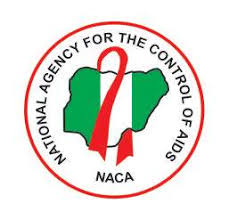Rivers, Benue and Akwa Ibom states have emerged as the top three states with the highest numbers of people living with HIV in Nigeria, according to the 2024 HIV spectrum estimates released by the National Agency for the Control of AIDS (NACA).
Rivers State leads with 208,767 recorded cases, closely followed by Benue State with 202,346 cases, while Akwa Ibom ranks third with 161,597 cases.
The data show that over two million Nigerians are currently living with HIV, which highlights the urgency for continued investment in prevention, testing, and access to antiretroviral therapy.
In Lagos State, Nigeria’s economic hub, 108,649 people are living with HIV, placing it fourth on the national chart. Anambra State follows with 100,429 cases, while the Federal Capital Territory (FCT) has 83,333 cases, one of the highest figures in the north-central zone.
Other states with significant prevalence rates include; Delta (68,170), Imo (67,944), Enugu (61,028), Edo (60,095), and Taraba (58,460). In the middle tier are Abia (54,655), Kaduna (54,458), Kano (53,972), Plateau (51,736), Borno (50,433), and Oyo (50,063). Cross River, Ogun, and Nasarawa also fall within this bracket with 43,452, 43,348, and 44,993 cases respectively.
Adamawa recorded 40,059 cases, with Gombe (31,825), Jigawa (31,409), Osun (30,714), and Niger (29,756) making up the lower-middle range. Bauchi (28,698), Kogi (28,421), Ondo (27,150), Katsina (26,788), and Bayelsa (25,339) are also in this category.
States with the lowest numbers of reported cases include Kwara (20,259), Kebbi (19,339), Ekiti (18,857), Sokoto (15,223), Ebonyi (14,151), Zamfara (13,253), and Yobe (11,956).
According to the estimates, 43,683 people died from HIV-related causes in the past year. Of these, 28,589 were adults, comprising 13,650 male and 14,939 female deaths. The data also revealed that 15,094 children aged 0–14 died due to HIV-related complications.
Reports say access to treatment has improved significantly, with 1,735,808 individuals currently on antiretroviral therapy. This includes 1,690,057 adults — 577,632 males and 1,112,425 females — and 45,751 children aged 0–14.


